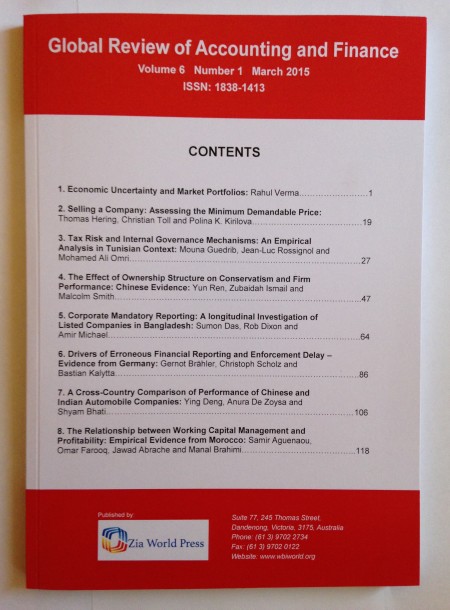Optimization of the Double Crossover Strategy for the S&P500 Market Index

Global Review of Accounting and Finance
Vol. 7. No. 1. , March 2016, Pages: 92 – 107Optimization of the Double Crossover Strategy for the S&P500 Market Index
The contribution of behavioral finance in the investor’s world cannot be fully justified without the existence and use of technical indicators which are all clear indications of investors’ representativeness and availability bias. Existing literature on technical analysis based trading systems are abundant where some studies have concluded the use of technical analysis and fundamental analysis techniques in stock trading strategies, with a preference over the former in predicting turning points. This study aims to answer whether an optimized moving average crossover strategy based on daily data outperforms a buy and hold strategy. The paper investigates the use of an optimized moving average crossover strategy for the S&P500, by using the SPDR S&P500 Exchange Traded Fund as a proxy for the US market index. The optimized strategy is evaluated against a buy and hold strategy over the five distinct waves which were witnessed during the 1993-2014 period. The annualized returns, annualized risk and the Sharpe performance measure are used as indicators to compare between the two strategies. Findings tend to support higher absolute returns and risk for the buy-and-hold strategy, particularly during correction waves. When compared to the buy-and-hold strategy over the post financial crisis period, the optimized double cross over strategy resulted in a relatively lower risk and returns. The market timing strategy still outperformed the naïve buy-and-hold strategy, with a relatively higher Sharpe performance measure. Alternatively stated, the rather simple moving average strategy which fits easily in the investor’s world due to his or her availability and representativeness bias, is preferred over the buy and hold strategy where the latter requires more effort when bearing the two correction waves witnessed during the 1993-2014 period.Key Words: Moving Average Crossovers, Financial Markets, Trading Strategy
JEL Codes: G11, G15, G17
